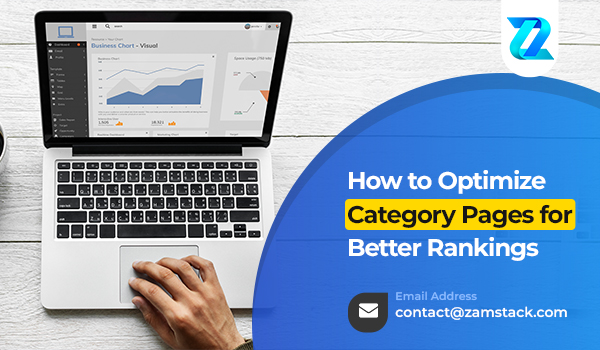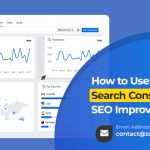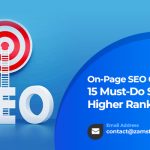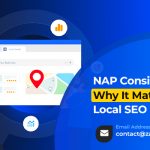When it comes to e-commerce SEO, your product pages often get all the attention—but ignoring category pages could be a huge mistake. Think of your category pages as the main roads that lead customers to specific destinations (product pages). If these roads are confusing, unoptimized, or slow, users won’t reach their desired destination—and your rankings will take a hit too.
At Zamstack Technologies, we specialize in creating high-performing SEO strategies, and today, we’re walking you through how to make your category pages rank like a pro.
Understanding Category Page SEO
What is a Category Page?
A category page is a collection page that groups similar products or content under one umbrella. For example, in a fashion store, “Men’s T-Shirts” is a category that includes all relevant products.
Difference Between Product and Category Pages
-
Product Page: Targets purchase intent for a specific item.
-
Category Page: Helps users browse and narrow their focus.
Optimizing both is important, but category pages can drive broad, high-volume traffic if handled properly.
Importance of Optimizing Category Pages
SEO Benefits
Category pages typically target broader search terms (like “running shoes” instead of “Nike Air Zoom Pegasus 39”). These keywords often have more traffic potential.
Enhanced User Experience
Proper structure and content guide users to the right product. No one likes a cluttered, disorganized page that makes browsing feel like solving a puzzle.
Conversion Rate Impact
If customers can’t find what they’re looking for, they’ll bounce. An optimized category page reduces bounce rates and improves conversions.
Best Category Page Structure for SEO
Clean and Hierarchical Design
A well-organized page helps both users and search engines. Use headings (H1 for the main category, H2 for subcategories) and intuitive layout.
Breadcrumb Navigation
Breadcrumbs like Home > Shoes > Running Shoes improve UX and provide contextual navigation for Google bots.
Writing SEO-Friendly Category Descriptions
Keyword Placement Strategy
Use your primary keyword in:
-
The first 100 words
-
At least one subheading
-
Image alt text
-
Naturally throughout the description
Length and Tone Tips
Keep it 150–300 words. Write like you’re talking to a customer—not stuffing a keyword database.
Optimizing Title Tags and Meta Descriptions
Ideal Format and Character Limits
-
Title tag: 55–60 characters
-
Meta description: 155–160 characters
Example Template
-
Title: Men’s Running Shoes | Lightweight & Durable Footwear
-
Meta Description: Explore top-rated men’s running shoes. Shop breathable, durable designs perfect for workouts. Free shipping & returns.
Creating an SEO-Friendly URL Structure
Use short, readable URLs:
✅ yourstore.com/running-shoes
❌ yourstore.com/cat123456?=prod+type_running
Use hyphens, lowercase letters, and include your focus keyword.
Image Optimization for Category Pages
-
Use WebP format for faster load times.
-
Include alt text with relevant keywords.
-
Compress without sacrificing quality using tools like TinyPNG or Squoosh.
Internal Linking Strategy
Linking to Products and Subcategories
Internal links:
-
Boost crawlability
-
Distribute authority
-
Improve user flow
Anchor Text Best Practices
Use descriptive anchor text like “lightweight trail running shoes” rather than just “click here.”
Pagination Optimization
Rel=”next” and Rel=”prev” Tags
Inform search engines that paginated pages are part of a series. This helps avoid duplicate content issues.
Infinite Scroll vs. Traditional Pagination
-
Infinite scroll is great for UX but harder to index.
-
Traditional pagination with crawlable links is SEO-friendlier.
Handling Duplicate Content
Canonical Tags
Use canonical tags to signal the primary version of a page to Google, avoiding ranking penalties.
Noindex Strategies
If filtering creates thin or duplicate pages, use noindex tags wisely.
Implementing Category Page Schema Markup
Structured data helps Google understand your page better. Use schema.org’s ItemList for product collections.
Pro tip: Add Product, Breadcrumb, and Review markup when relevant.
Mobile Optimization for Category Pages
-
Responsive design is a must.
-
Check your Mobile Usability report in Google Search Console.
-
Use large tap targets and fast-loading elements.
Page Speed and Technical SEO
-
Compress CSS/JS files.
-
Use CDN and lazy load images.
-
Remove unnecessary plugins/scripts.
Fast-loading pages = better rankings and UX.
Voice and Visual Search Optimization
-
Use conversational phrases in headings and descriptions.
-
Tag images properly for platforms like Google Lens and Pinterest.
Category Page SEO for Different Platforms
Shopify
-
Use SEO apps like Smart SEO
-
Customize collection page titles/descriptions
WooCommerce
-
Enable breadcrumbs
-
Use Yoast SEO plugin for optimization
Magento
-
Focus on URL rewrites and canonical tag management
BigCommerce
-
Use built-in SEO settings for meta fields
-
Prioritize page speed with lightweight themes
Common Mistakes to Avoid
-
Thin content with no valuable text
-
Keyword stuffing that ruins readability
-
Ignoring regular updates for category freshness
Final Thoughts
If you want to boost your rankings and revenue, category page SEO isn’t optional—it’s essential. From smart keyword placement to structured schema and lightning-fast load times, every tweak adds value. At Zamstack Technologies, we help e-commerce businesses dominate SERPs with proven, high-impact SEO strategies tailored to category pages. Let us handle your SEO while you focus on growth.
FAQs
1. How long should a category page description be?
Ideally 150–300 words, focused on helping users and search engines understand the page.
2. What is the best way to structure URLs for category pages?
Keep them short, use hyphens, and include target keywords: /mens-running-shoes not /cat123?=runshoes.
3. Should I use schema markup on category pages?
Absolutely. Schema like ItemList, BreadcrumbList, and Product markup helps boost CTR and visibility.
4. How often should I update my category pages?
At least once every 6 months or whenever products/categories change significantly.
5. Can I use AI to generate category descriptions?
Yes, but always review and optimize for tone, keyword relevance, and accuracy.













